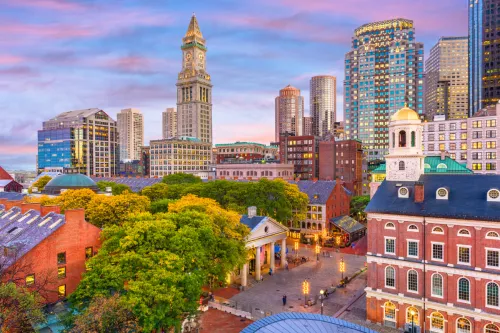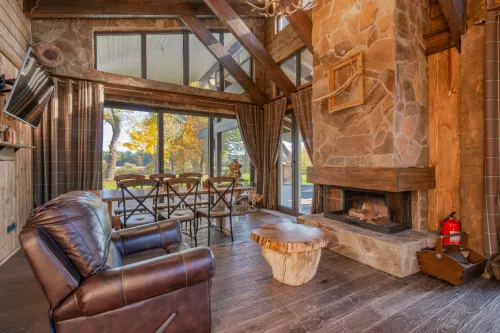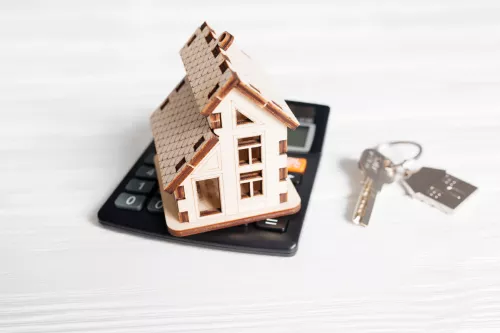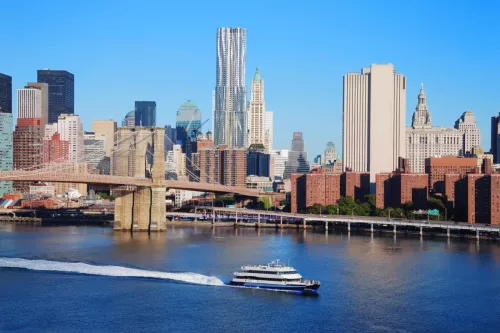Embarking on the journey of home design is a deeply personal adventure, rich with a tapestry of styles, techniques, and philosophies. As you stand on the threshold of possibly designing your dream home from scratch, refreshing your interiors with the latest trends for 2024, or navigating through the most budget-friendly design avenues, this guide is poised to illuminate your path.
We delve into the myriad of interior design styles that cater to every conceivable taste, ensuring you're well-equipped to carve out a space that truly mirrors your unique essence and desires.
The quest for the perfect aesthetic can often lead to moments of wonder about the vast spectrum of design possibilities. Whether you're contemplating a style transformation but find yourself at a crossroads, rest assured, there's a design philosophy tailored just for you, waiting to be uncovered with our expert guidance.
Designing Your Own House: A Dreamer's Blueprint

The journey to design your own house is thrilling yet daunting. It begins with a vision and unfolds into a detailed plan that considers space, functionality, aesthetics, and sustainability. The key is to start with a clear understanding of your needs and desires.
1. Define Your Vision
Start by envisioning what you want in your dream home. Consider factors like the number of rooms, style, energy efficiency, and how your lifestyle fits into the design. Inspiration can come from magazines, online resources, and even exploring different neighborhoods.
2. Set a Budget
Before diving into design details, establish a budget. This will guide your decisions and help ensure your project remains financially feasible. Remember to include a buffer for unexpected expenses.
3. Choose a Location
The location of your land can significantly influence the design of your home, from its orientation to take advantage of natural light and views, to compliance with local building codes and regulations.
4. Sketch Preliminary Ideas
Begin sketching your ideas, focusing on layout and space allocation. At this stage, consider the flow between rooms, privacy aspects, and how the house connects with outdoor spaces.
5. Consult Professionals
Even if you're keen on a DIY approach, consulting with architects, interior designers, and builders can provide valuable insights. They can help refine your ideas, ensure structural integrity, and navigate building codes.
6. Finalize Design Plans
With professional input, finalize your house design. This includes detailed floor plans, elevations, and possibly 3D renderings to help visualize the space. Ensure your plans meet local building codes and obtain any necessary permits.
7. Select Materials and Finishes
Choose materials and finishes that align with your aesthetic preferences, budget, and sustainability goals. This includes everything from flooring and paint colors to energy-efficient appliances.
8. Plan for the Future
Consider how your needs might evolve over time. Designing with flexibility in mind, such as adaptable rooms or expansion possibilities, can accommodate future changes in your lifestyle.
9. Stay Involved
Throughout the construction process, stay engaged and communicate regularly with your builder or contractor. This ensures that the project stays true to your vision and addresses any issues promptly.
10. Decorate and Personalize
Once construction is complete, the final step is to decorate and personalize your space, making it truly feel like home. This includes selecting furniture, artwork, and personal touches that reflect your style.
Interior Design Ideas for 2024: Trends and Innovations

As we look ahead to 2024, interior design trends are leaning towards sustainability, multifunctional spaces, and a blend of modern and natural elements. Expect to see a rise in smart home technologies integrated seamlessly into design, eco-friendly materials, and spaces that promote well-being. Textures and patterns will bring warmth and depth, while bold, expressive colors will add character and dynamism to interiors.
Sustainable Materials
The push towards sustainability continues to shape home design trends, with a growing preference for eco-friendly and responsibly sourced materials. From bamboo flooring to recycled glass countertops, these materials not only reduce environmental impact but also bring a sense of natural beauty and warmth to interiors.
Bold Colors
Expect to see a departure from neutral palettes, with bold and vibrant colors making a statement in 2024. Deep blues, rich greens, and striking yellows will be used to inject personality and vibrance into spaces, reflecting homeowners' growing confidence in color experimentation.
Bold Lighting
Lighting takes center stage with sculptural and oversized fixtures that act as focal points in a room. Innovative designs and unexpected materials transform lighting into art, with bold shapes and sizes that challenge traditional aesthetics.
Antiques
Antiques are making a comeback, offering a way to infuse homes with character and history. Mixing and matching period pieces with contemporary decor not only creates visual interest but also promotes sustainability through reuse.
Artisanal Craftsmanship
Handcrafted items with a focus on artisanal craftsmanship are gaining popularity for their uniqueness and the story they tell. Custom-made furniture, hand-blown glass, and woven textiles add a personal touch that celebrates skilled craftsmanship.
Furniture
Furniture in 2024 will likely lean towards comfort and functionality, with modular and multi-purpose designs that adapt to various living situations. Soft, plush fabrics and rounded, organic shapes will dominate, offering a cozy and inviting aesthetic.
Fluted Details
Fluted and ribbed textures are making their way from architecture and furniture to smaller decor elements, adding depth and dimension. This trend brings a tactile quality to surfaces, from cabinet fronts to lamp bases.
Tile
Tile is not just for bathrooms and kitchens anymore. Expect to see bold, patterned, and textured tiles used as statement pieces in living areas, bringing color and pattern to unexpected places.
Statement Pieces
Statement pieces will be key in defining spaces, whether it's a large-scale artwork, a bold piece of furniture, or an eye-catching rug. These pieces will be conversation starters, reflecting personal style and boldness.
Dedicated Home Offices
As remote work persists, dedicated home offices will become a staple, designed for productivity and comfort. Customizable and ergonomic solutions will be key, reflecting the importance of a well-designed work environment at home.
Minimalism
Minimalism remains a key trend, with a focus on decluttering and intentional design. The aesthetic is evolving to incorporate more warmth and texture, moving away from stark, cold spaces to more inviting, minimalist interiors.
Nature-Inspired Wallpaper
Wallpaper inspired by nature, with botanical, floral, and landscape motifs, will bring the outdoors in. This trend offers a vibrant and dynamic way to add depth and character to rooms.
Which House Design is Best? Finding Your Style
The preference for a certain style of interior design is highly individual, influenced by personal tastes, the way of life, and the distinct requirements of a household or individual. Interior design is a subjective discipline, encompassing a broad spectrum of styles, each with its unique features and charm. Below are some widely admired interior design styles along with their principal attributes:
Minimalist Design
This design philosophy stresses the importance of simplicity, featuring clean, crisp lines and a minimalist approach to decor. It prioritizes the essentials, employing neutral color schemes, purposeful furniture, and spacious, uncluttered areas to foster a tranquil and orderly atmosphere. It's perfect for those who value a sleek and subtle look, as well as for individuals aiming to enhance their living space and embrace a mindful lifestyle.
Modern Design
Known for its smooth, angular lines and modern flair, this design style often uses a variety of materials like glass, steel, and concrete. It favors minimalist furnishings and striking accents, embracing open layouts, ample natural illumination, and state-of-the-art innovations. This style caters to those who lean towards a contemporary, urban aesthetic.
Traditional Design
This style is inspired by classic European decor and historical motifs, showcasing ornamental details, deep color palettes, and sumptuous textiles. It features vintage furnishings, complex patterns, and decorative pieces that convey opulence and grandeur. Traditional design is ideal for individuals who admire enduring beauty, formal environments, and a touch of historical charm.
Transitional Design
Merging traditional and modern design elements, this style strikes a balance between the old and the new. It exhibits clean lines, subdued hues, and an assortment of classic and contemporary furniture. Transitional design is adaptable and versatile, appealing to those who enjoy a blend of conventional grace and modern simplicity.
Eclectic Design
This approach celebrates a diverse mix of styles, colors, and textures, crafting an environment that's uniquely expressive and visually engaging. It's all about personal expression, creativity, and the bold fusion of different design influences. Eclectic design is for the adventurous at heart, those who delight in vibrant, unexpected combinations.
Economizing with Style: The Cheapest House Design Styles

Designing a stylish home on a budget is achievable by embracing design philosophies that prioritize simplicity and functionality, such as Minimalist and Industrial styles, which inherently use fewer materials and embrace raw, unfinished looks.
Modular and tiny homes present innovative, cost-effective solutions by reducing construction waste and maintenance costs through their smaller, customizable designs. Scandinavian design, with its emphasis on light, space, and natural materials, offers an economical approach by focusing on quality and durability over quantity, allowing for significant savings without compromising style.
Additionally, adopting a DIY mindset and upcycling can further economize your home design, allowing for personalized touches and unique features that reflect your taste without the high price tag. The essence of economizing with style lies in strategic investment in key pieces and resourcefulness, blending functionality, personal expression, and affordability.
People also ask
How can I maximize a small living space?
Utilize multi-functional furniture, embrace vertical storage solutions, and ensure ample lighting to make small spaces feel larger and more open.
Can I mix different design styles?
Absolutely. A harmonious blend of styles can add depth and personalization to your space. The key is to maintain balance and ensure a cohesive flow.
What are some sustainable design practices?
Opt for eco-friendly materials, incorporate energy-efficient systems, and design with longevity in mind to minimize environmental impact.
 Marcio Vasconcelos
Marcio Vasconcelos
